Locomotive Engineer Darrin Crone provides us with an insight of the previous couple of weeks’ work on restoring the great locomotive.
Week commencing 7 October
Work started on the repair to the frames this week, with a number of rivets being drilled through. We were permitted to use the National Railway Museum’s magnetic clamp drill for the job. We must thank the workshop staff for letting us use the mag drill, as it makes this task so much easier. There aren’t a lot of rivets to get through, and most of the ones to be replaced are now drilled through on the right hand side of the frames.
The various brackets on the outside of the frames are in the process of being dye penetrant tested. The left-hand brackets are completed and have been checked off as OK by our CME. This work is continuing on the right-hand side of the loco.
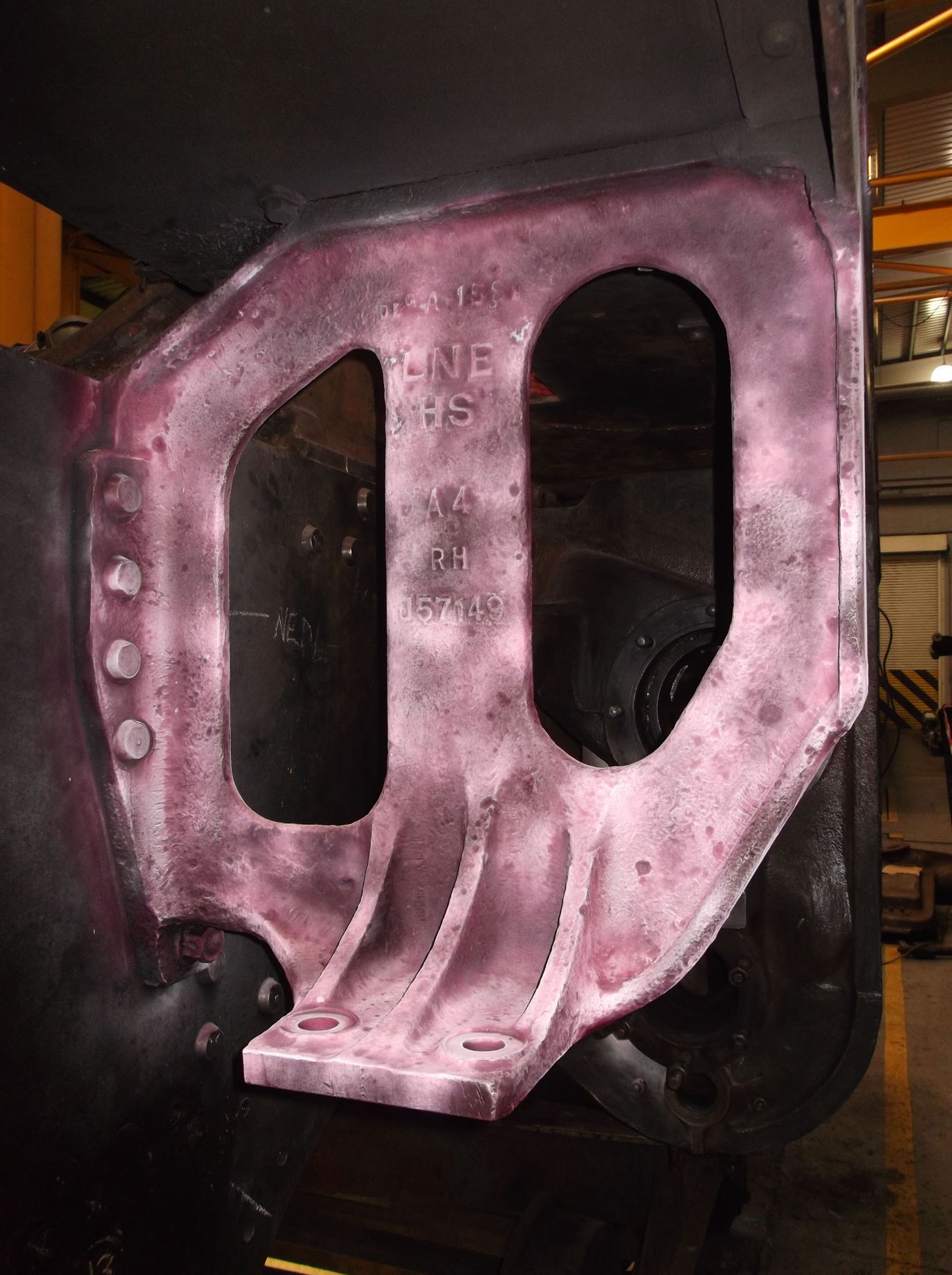
The descaling of the saddle and middle cylinder castings has really come along this week. The concrete cast into the pockets above the middle cylinder to the rear of the saddle was removed this week, along with various nuts, bolts and washers in the concrete – though no silver sixpences yet. Most of the Engineering Team had a go at this work.
A section of footplating has been very neatly removed above the right-hand cylinder so that we can access a broken bolt on the top cylinder flange. Removal of broken and life-expired fasteners continued this week.
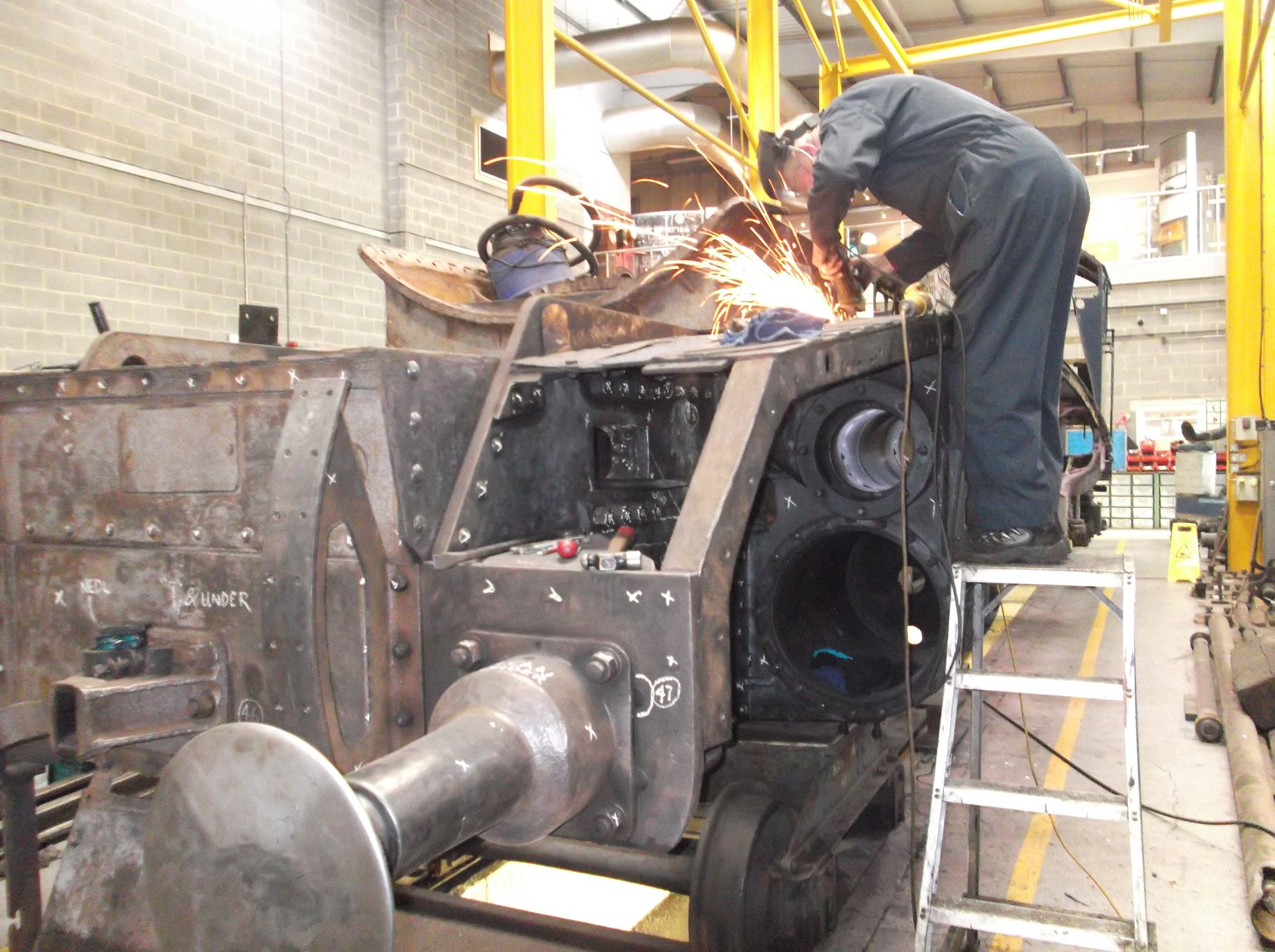
Away from the locomotive we had a visit from a Mk1 coach specialist from the NYMR. He examined the coach electrical system and found a blown fuse which we replaced, allowing the coach battery-supplied lights to switch on and off correctly. The condition of the dynamo and regulator were inspected and look good.
The bogie cleaning was effectively completed this week and needle gunning began. There isn’t a lot of paint on the underside, so work is concentrated on removing the paint from the bogie sides. When complete we will examine this side of the bogie then turn it the right way up.
Painting continued this week on the removed sandboxes and suspension components. The painting bench was moved to the front of the loco, as the space it had been occupying is now required by the Museum. In addition, the components laid out next to the painting bench have been moved to increase the free space on the north road in the workshop.

On Saturday the Junior Volunteers moved the components and the smokebox front plate near to the bogie in preparation for refitting to the smokebox. The preparation involved removing the remnants of the old seal where it mated with the smokebox barrel. The Juniors also moved the cods mouth operating mechanism clear of the wheeldrop so that the NRM can do their planned wheeldrop demonstrations.
Week commencing 14 October
The week started with the removal of the frame rivets, which we had decided to renew during the frame inspection. The ones on the right-hand frame plate were drilled through last week and the magnetic clamp drill was used to start drilling those on the left-hand frame plate. Once the larger rivets were drilled through the heads were burned off. Once the heads were removed the rivets were driven through. Some small ones that hold the splasher brackets still need to be taken out.
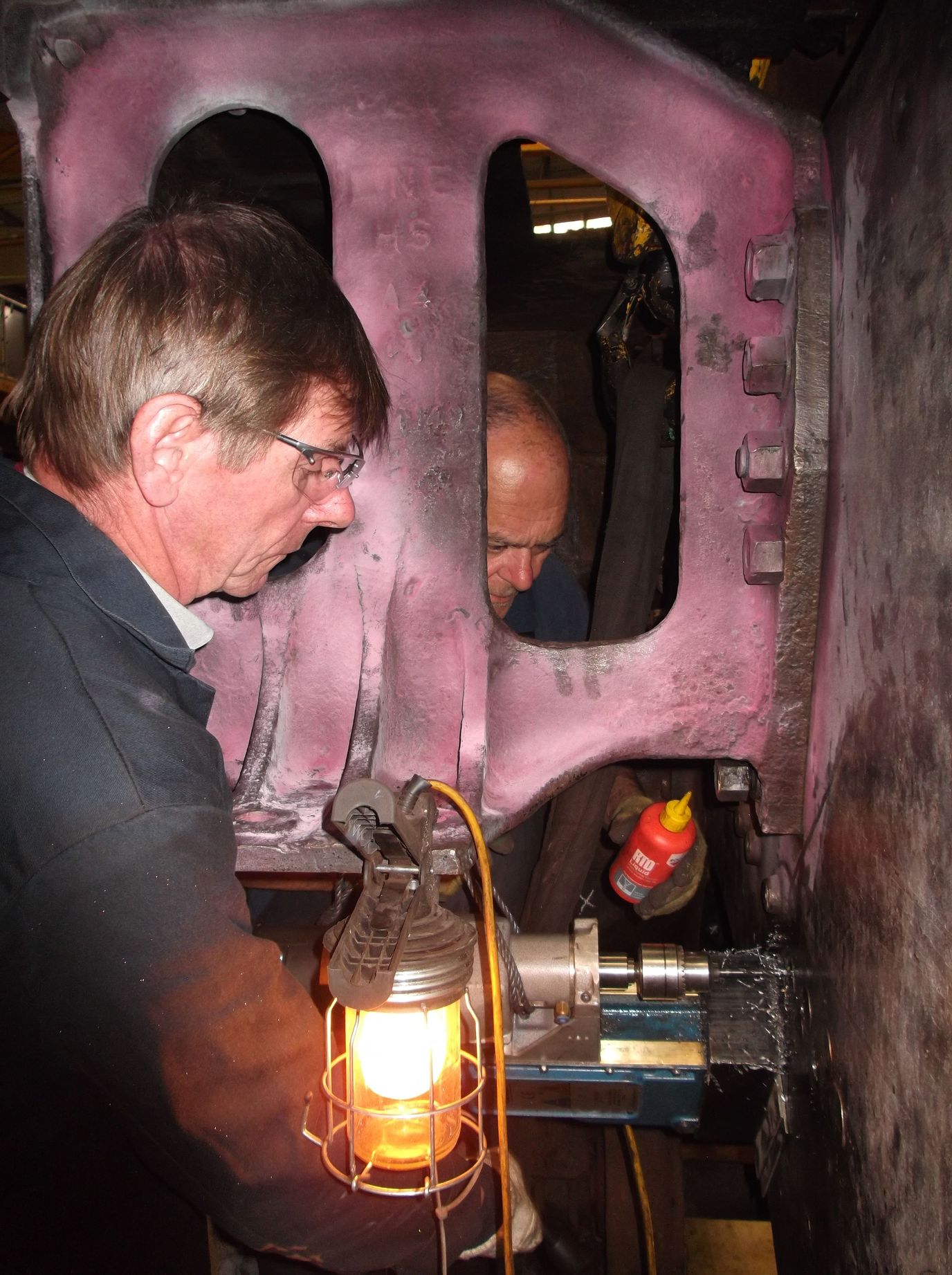
This week saw paint applied to the frames for the first time during this overhaul. We painted the frame brackets that were tested for flaws last week. Testing of the the lubricator bracket and the expansion link bracket on the right-hand side was completed. Testing between the frames continued this week, with the dye penetrant being applied to the thus-far untested spring hanger brackets.
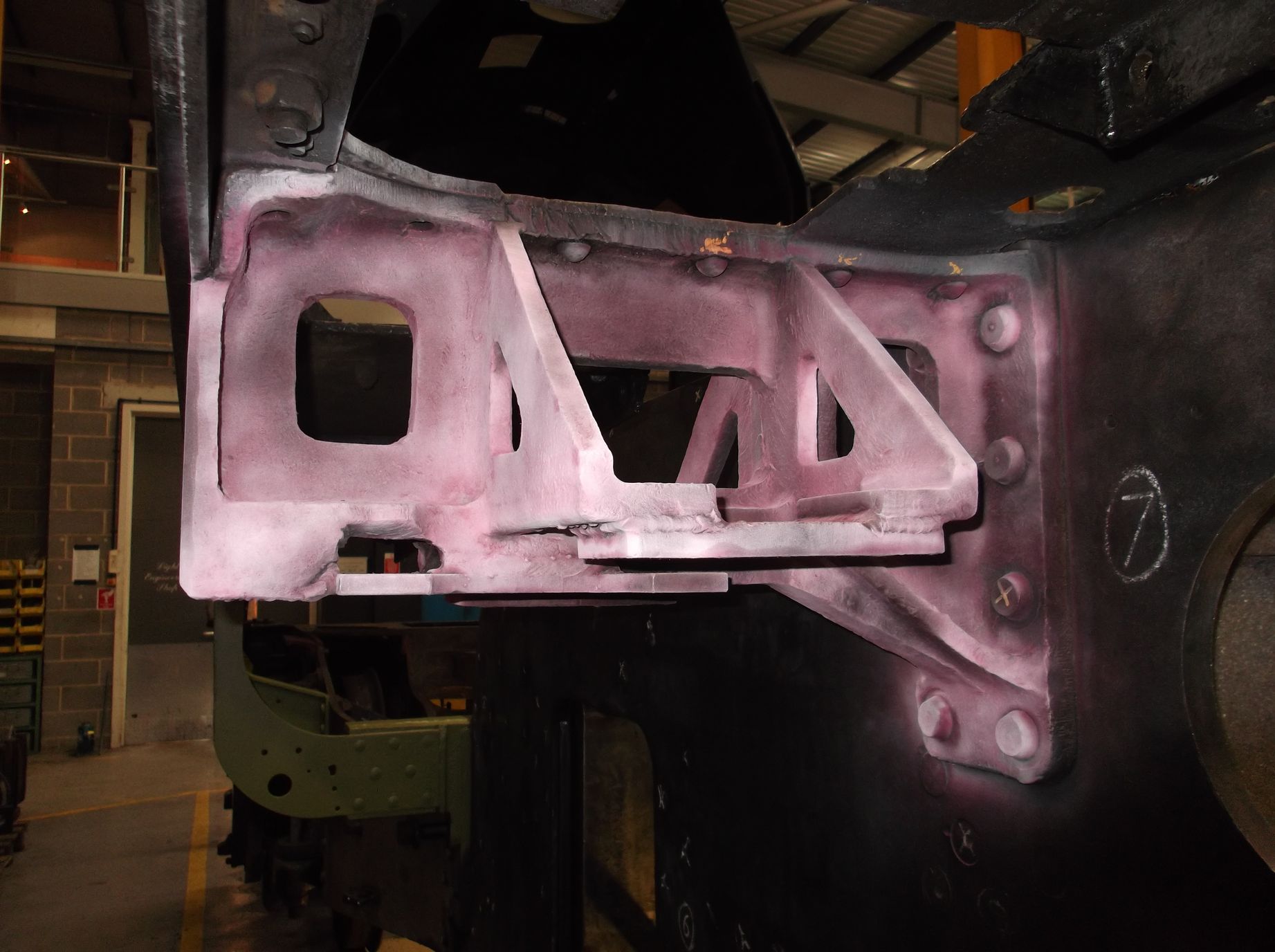
The superheater header top was ultrasonically tested this week. The superheater needs to be moved so that this inspection can be completed. Our CME has continued his measuring of the coupled wheel horns.
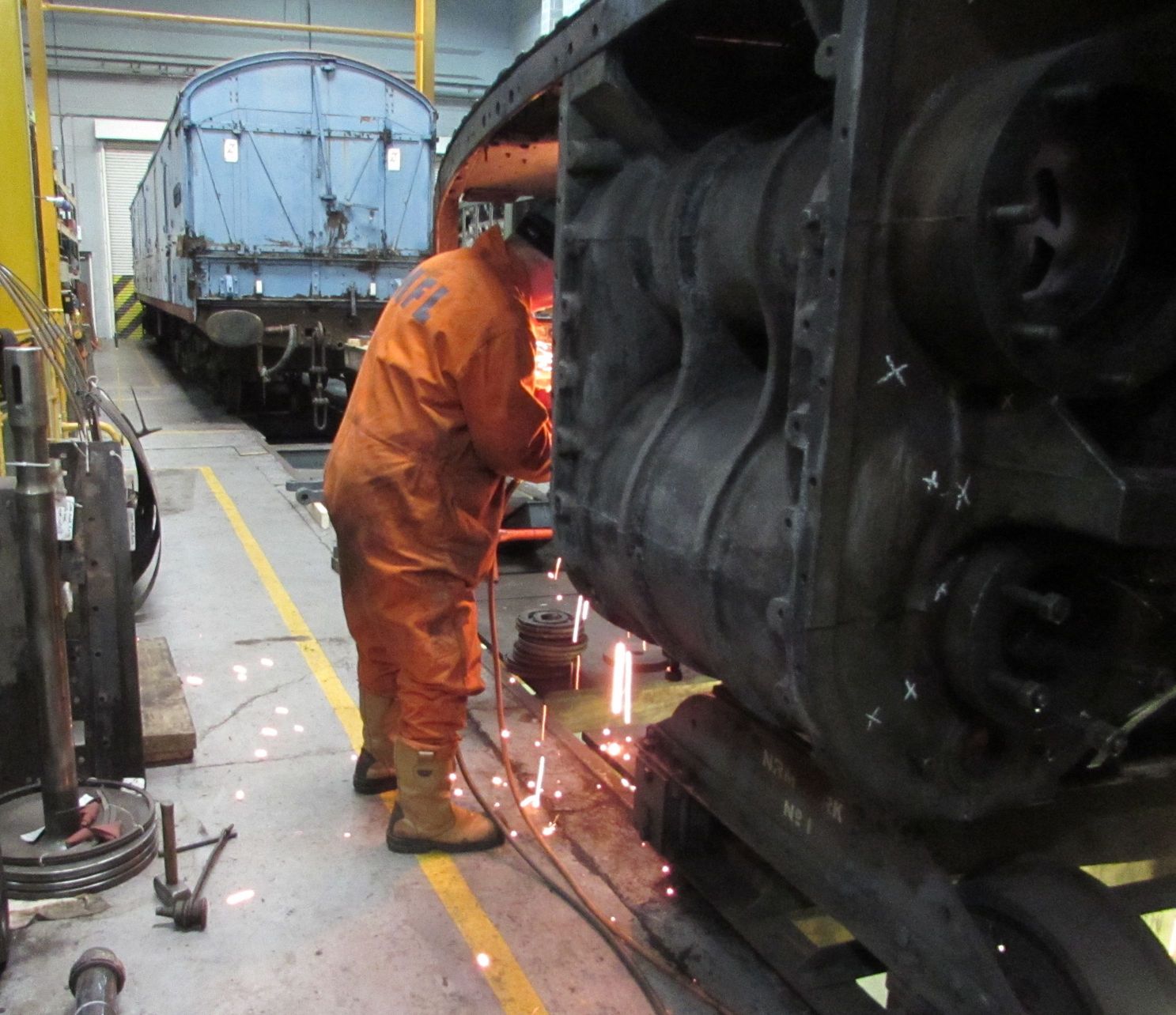
The removal of studs that need to be replaced continued this week, until the drill failed on us. We have a replacement drill, so we can carry on with the job next week. Also continuing is the inspection of the cylinder and saddle castings. Work concentrated on the right-hand outside cylinder around the slidebar bracket. There is still quite a bit of work to be done in preparation for inspection around the inside cylinder and under the saddle.
Week commencing 21 October
The big news of the week was the announcement that the Trustees have decided to send the boiler for overhaul at the Llangollen Railway. Plans for its move are now well advanced with crane and haulage companies. The NRM have said that we can use the slings we used for the boiler lift from the frames in preparation for the move.
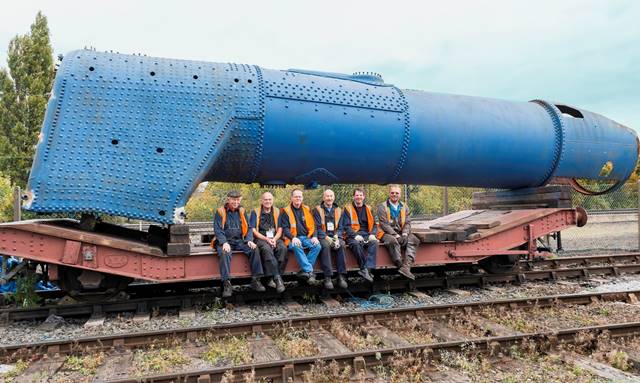
Earlier in the week the Engineering Team went up the North Yard to take the sheet off so that we could remove steps and other equipment that had been left in the boiler. We had our official photographer with us and he took some photos of the Engineering Team with the boiler for a press release.
Some boiler components will be refitted for the journey to Llangollen. The smokebox door plate has already been cleaned off for reattachment, and the sealing faces on the dome cover and belly door were cleaned on Tuesday.
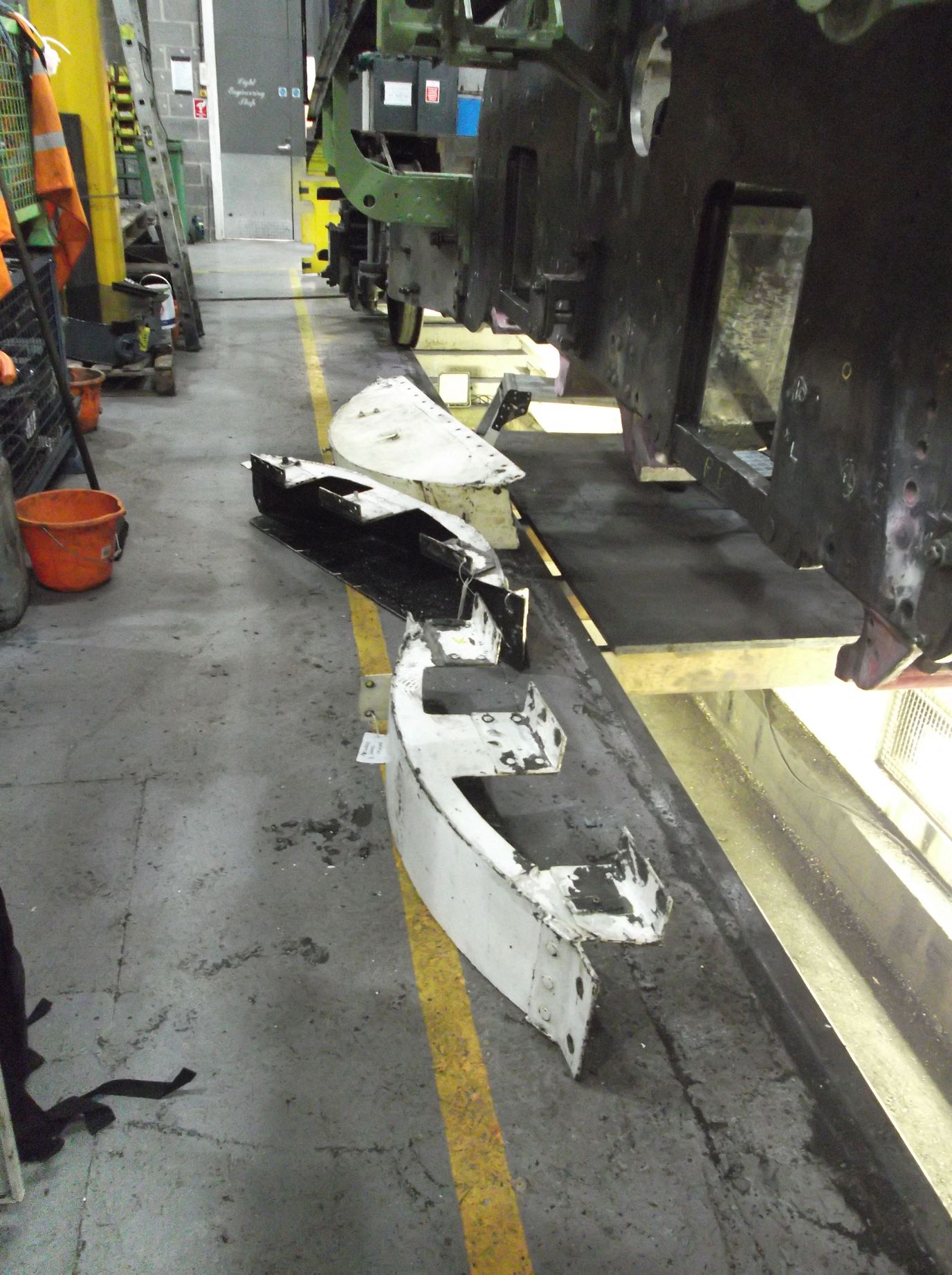
The splashers over the coupled wheels were put next to the engine this week in preparation for refitting. Many of the splasher frame brackets have worked loose and will need to be refixed. Likewise, the brackets on the splashers have in some cases worked loose. These will be welded to reattach them. To ensure we fix the brackets in the correct place the splashers have been trial fitted to the frames, and when bolted up tight the brackets will be tack welded in position.
The trail fitting of the splashers has involved drilling out loose fasteners on some of the splasher frame brackets. The splashers will be welded fully in the welding shop. We are partway through this job, with two splashers now in the welding shop.
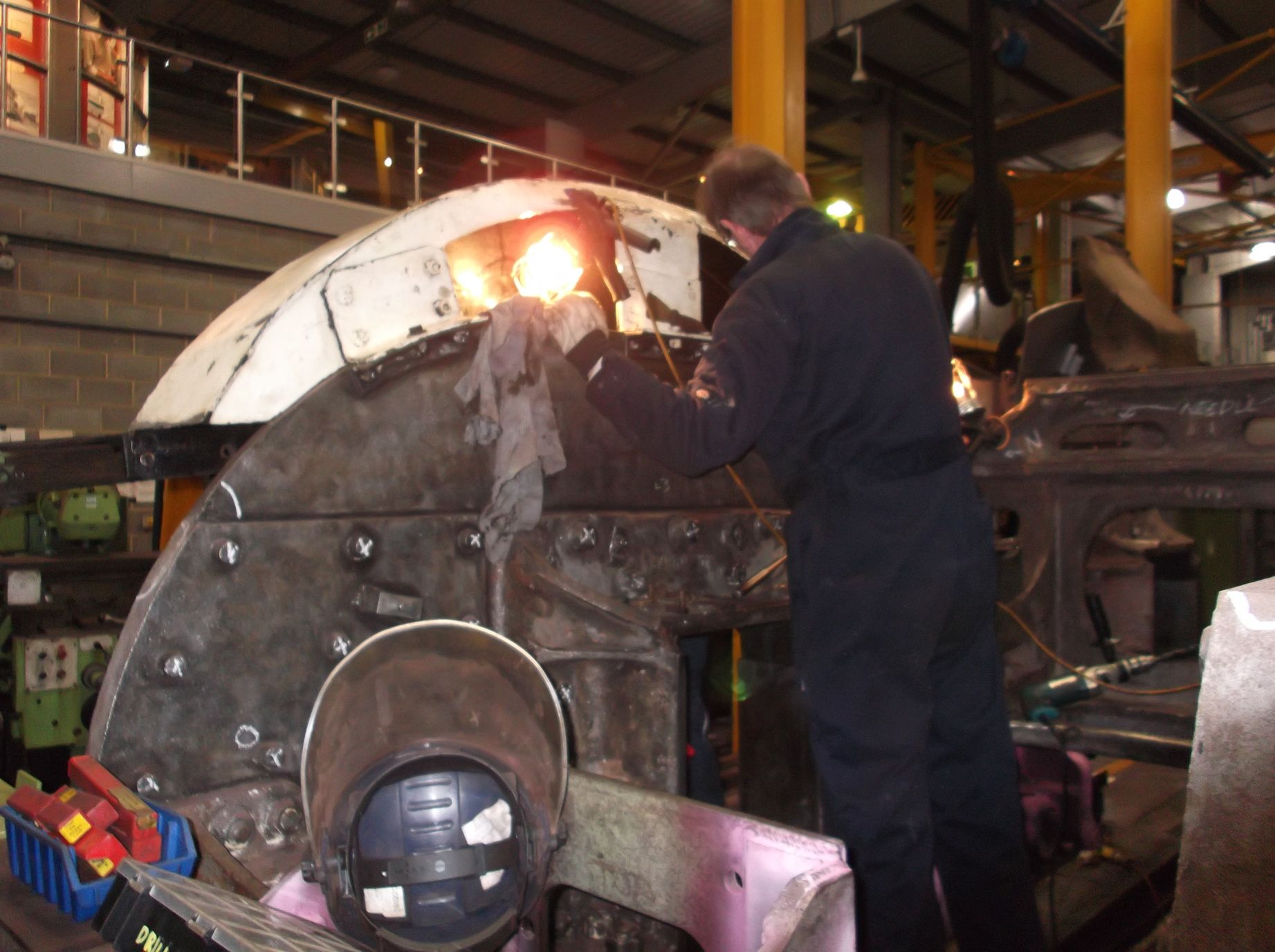
The inspection of the frames continued with dye penetrant testing of the cylinders around the slidebar brackets. Engineering Team volunteers have patiently removed surface corrosion from around the brackets so that a reliable test can be carried out.
Painting of the suspension components has continued, with gloss now being applied. Gloss has also been applied to the sandboxes. The prime painting of the frame brackets to the rear of the outside cylinders was completed this week.
Week commencing 28 October
Trial fitting of the splashers continued this week, with loose rivets drilled out and their brackets positioned to make them a better fit on the loco. By the end of the week all splashers had been on and off the loco and were ready for welding up. This involved identifying and preparing all the minor cracks for welding. On the loco the final position of all the splasher mounting brackets have now been fixed. On Saturday the splashers were moved in to the welding shop and all were finish welded and are now back in the main workshop ready for painting.
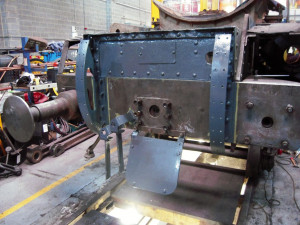
The horizontal frame stretcher that the steam sand boxes are fastened to was dye penetrant tested to ensure soundness and was then painted. Painting has also continued on areas around the front of the loco and the steam sandbox filler pipes and brackets after they were cleaned and stripped earlier in the week.
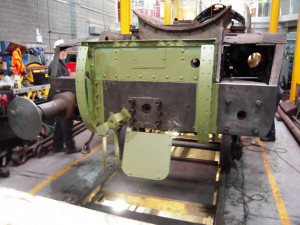
The removal of the gravity sandbox studs on the left-hand side of the loco was completed this week. The holes have also been retapped. Away from the mainframes deep cleaning of the air pump has been started, prior to its overhaul. The pump is covered with cooling fins so has a considerable surface area and plenty of corners to clean out.
The holes of the removed spring bracket rivets have been cleaned out and the countersinks cleaned up before we run a countersink tool in them to finally finish them. A number of the existing counter sink holes are marked from repeated rivet renewal over the years of service on the LNER and BR.

We now have access to the top of the cylinder castings as the removal of the left hand section of footplate was completed this week. There is a considerable accumulation of carbon at the top front of this casting which we can now remove allowing inspection of the casting and its fixing bolts.
This is the ninth update – you can catch up on the previous posts here.
I am very proud of my brother Peter working on sir Nigel and I know my parents would be to. It’s a great thing to do. I think the men are all good friends. Carry on the good work boys.